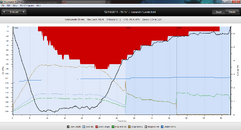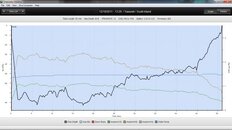Hi All,
Whats your SOP for making repetitive dives after using trimix? It was explained to me that after a dive with TMx, all subsequent dives should include helium- Ie: no air/EANx dives after trimix.
Here is the rational for the question: Im planning to dive the Jupiter Helldiver this Friday- profile should be 185' for 20-30 on 20/25. The charter I will use consistently offers three tankers even on tec trips- not everyone on board will make a tec dive for the first drop. My practice is to sit out the second dive to get a nice long SI and dive the third drop of the day. Last dive of the day will be around 80-90'.
Ive done the above tec dive on air (I know, I know..) and single tank EANx for subsequent dives. Now that Ill be diving TMx, I am debating on using whatever I have left in my LP95s for the second dive, or blending a single tank with some lean trimix, say 32/15.
What would be your preferred option for the example given above?
thanks for the input
steve
Whats your SOP for making repetitive dives after using trimix? It was explained to me that after a dive with TMx, all subsequent dives should include helium- Ie: no air/EANx dives after trimix.
Here is the rational for the question: Im planning to dive the Jupiter Helldiver this Friday- profile should be 185' for 20-30 on 20/25. The charter I will use consistently offers three tankers even on tec trips- not everyone on board will make a tec dive for the first drop. My practice is to sit out the second dive to get a nice long SI and dive the third drop of the day. Last dive of the day will be around 80-90'.
Ive done the above tec dive on air (I know, I know..) and single tank EANx for subsequent dives. Now that Ill be diving TMx, I am debating on using whatever I have left in my LP95s for the second dive, or blending a single tank with some lean trimix, say 32/15.
What would be your preferred option for the example given above?
thanks for the input
steve








